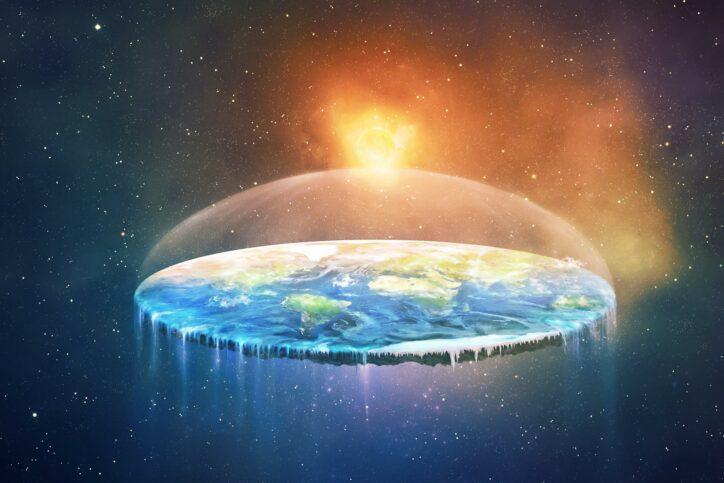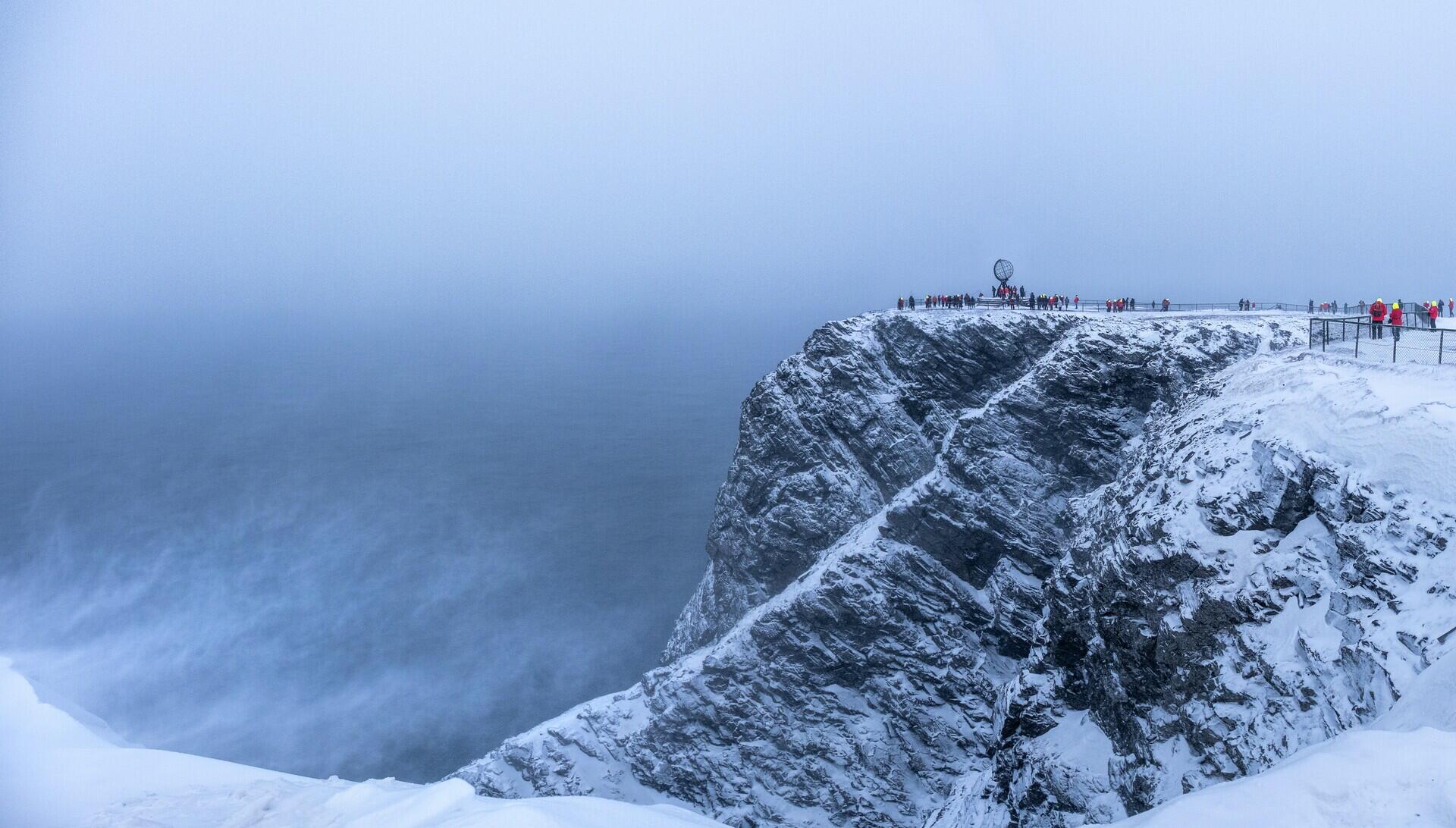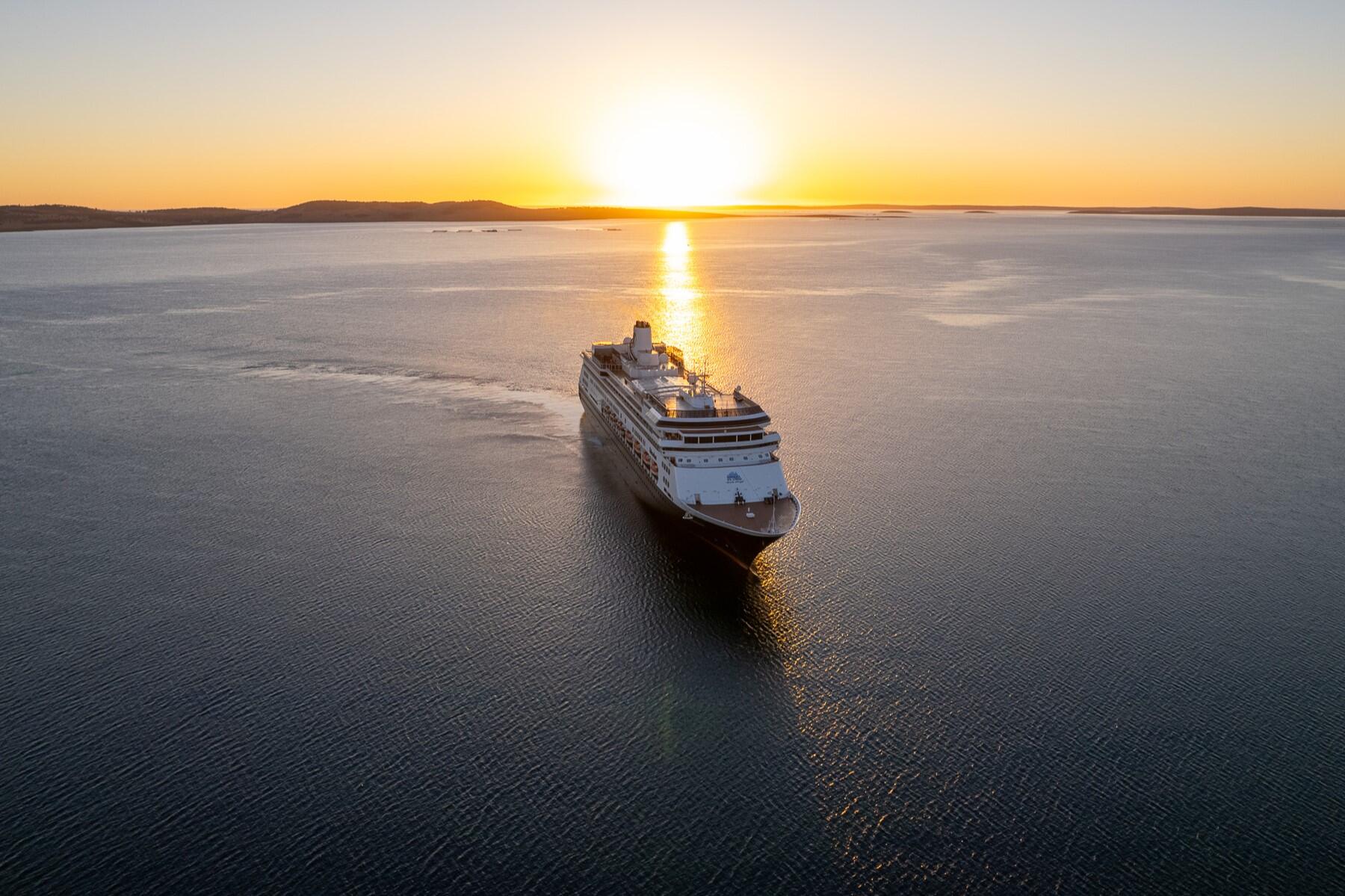Since they’ll never be at the forefront of science, flat-earthers are focusing their efforts on the field of schadenfreude.
For some reason, humankind’s lowest common denominators have been allowed to wrangle the rest of the species into relitigating the veracity of empirical facts as if they’re up for debate. Things that science has already confirmed (“Climate change is real.” “You need to vaccinate your kids.”) are swatted away by the not-so-compelling bleating of “nuh-uh!” And the Earth’s status as a sphere hasn’t been spared from this unfortunate trend.
And now this unfortunate trend is headed into the open ocean. The Flat Earth International Conference (FEIC) has just announced that it will be holding its 2020 conference on a cruise. Details on the cruise are scarce (much like their evidence that the Earth is flat) but a banner on the FEIC’s website promises that it will be the “biggest, boldest, adventure yet.”
Someone should check on Galileo’s severed fingers because they’re surely spinning in their glass jars.
If we had a laugh track, we’d insert it here. There’s something stunningly entitled about a group of people gathering at what, if you’re a cruise ship captain, is your place of work, to confidently declare the very real tools you use as being predicated on fantasy. Because ships require navigational systems that require the Earth to be spherical in order to function.
Recommended Fodor’s Video
Compounding the joke is where they’re not going. If you were to hazard a guess as to what a yet-to-be-named destination for Flat Earthers taking a cruise might be, you’d be foolish not to guess Antarctica. It is, after all, where you go to prove that the Earth is flat, according to Flat Earthers who believe that we all live on a flat disc. At the edge of that disc is the continent of Antarctica which acts as a barrier that keeps us from falling off.
“All we have to do to shut this debate down once and for all is get the distance of the coast of Antarctica,” Jay Decasby, a Flat Earther who is working on a TV series on the topic told Forbes, “If we can get to the coast of Antarctica and sail all the way around it, we will get the distance that will prove it’s the outer edges of flat earth and refute entirely every single argument anyone can possibly try to pitch for the sun-worshipping cult of heliocentrism.”
The only thing that Flat Earthers need to do to legitimize their existence is to take a cruise to Antartica and sail around it. But, while they have yet to announce where they’re going, in a statement to the DailyMail.com, FEIC founder Robbie Davidson said Antartica is the one place they won’t be going. The 2020 trip is “just a cruise” and the group isn’t on a mission to find the ice shore at the end of the world “yet.”
The fact that Flat Earthers aren’t in a hurry to prove the very thing that defines them and would rather upgrade to that premium beverage package and luxuriate under Caribbean rays (which, according to them, emanates from a sun that rotates parallel to the Earth around the North Pole) doesn’t make the matter less ironic or embarrassing. Someone should check on Galileo’s severed fingers because they’re surely spinning in their glass jars.
What’s the Big Deal?
It would be so much more relaxing to just let the Flat Earthers have their hobby—like the devotees that search for Bigfoot or Nessie. But the exhausting reality of living in 2019 is that Flat Earth conspiracy videos are, algorithmically speaking, just a quick hop, skip, and a jump down the YouTube rabbit hole that spits you out in a Wonderland of other conspiracies that have real-world consequences.
That’s because social media outlets like YouTube, where Flat Earth and other conspiracy theories thrive, tend to up the ante on extremism. According to academic and techno-sociologist Zeynep Tufecki, in her New York Times Op-Ed “YouTube, the Great Radicalizer,” escalation is built into YouTube’s algorithm.
If you ever find yourself compelled by thoughts of a pancake-shaped existence, eschew any misbegotten Antarctic explorations or random conferences and consider a trip that will allow you to view the curvature of the Earth in front of your own two eyes.
Her experiments in following the rabbit hole of YouTube’s recommended videos frequently followed the same path: towards escalation. Even when the videos weren’t political, “videos about vegetarianism led to videos about veganism. Videos about jogging led to videos about running ultramarathons … It promotes, recommends and disseminates videos in a manner that appears to constantly up the stakes.”
Political conspiracy videos like the Flat Earther videos (now seems like a pertinent time to remember that the Sandy Hook parents being harassed after Alex Jones, a Flat Earther, espoused his conspiracy that the mass shooting at the school was a hoax) can lead you down a path that furthers white supremacy, misogyny, or any number of hateful ideologies, and passively watching propaganda has real potential to impress extremism on viewers. This certainly isn’t the first time that YouTube and other media outlets have been accused of training users to be conspiracy theorists.
YouTube has pledged to combat their misinformation problem but has been slow to move. Which is disappointing but not surprising when you consider that there’s big money to be made, whether it’s from ad revenue or hoodwinking gullible people into shelling out for your conference to a cruise around the “flat” Earth, the endgame is the same.

Travel to Prove Flat Earth Theory Is Dumb
We don’t have to wait for social media to get it together. Travel can serve as the antidote to ignorant arguments about places and people. If you ever find yourself compelled by thoughts of a pancake-shaped existence, eschew any misbegotten Antarctic explorations or random conferences and consider a trip that will allow you to view the curvature of the Earth in front of your own two eyes. Here are some ideas:
Hop on a Plane
A lot of long distance traveling already involves a primary method of observing the spherical nature of the Earth: air travel. When taking a long, circumnavigational flight, all you really have to do is look out your window to see the tell-tale curving on the horizon.
Take a Hike
Don’t want to shell out for a trans-Atlantic flight? No worries! No matter where you’re from, you can likely raise your personal elevation with a good hiking trail (really, even a tree will do). The point of this exercise is to observe that the higher you go, the more you see. If the Earth was totally flat, how high up you are wouldn’t affect what you can see.
Simply Look Up
Afraid of heights? You can always partake in what was likely the first-ever leisure activity in human history: stargazing. You can travel to different parts of the world and observe how the constellations in the night sky are different than the ones in your hometown. Aristotle himself observed that, while traveling south, the constellations would rise up and over the horizon—something that could only happen on a spherical Earth. Or, between July 16 and 17, you can observe the next partial lunar eclipse. Lunar eclipses can be observed from anywhere, but it will be most visible in South America, Europe, Africa, Asia, and Australia. Wherever you are, however, you’ll be able to see the curved shadow of the Earth making its way across the surface of the moon. Something that could only be achieved by a disc-shaped planet if the moon was always overhead during an eclipse, which is rarely the case.
Then there’s the concentrated version of stargazing: total solar eclipses. Instead of faffing around with demonstrations that aim flashlights and candles at quarters in a crude facsimile of a solar eclipse, you can experience the real thing for yourself. Find your way to Chile or Argentina, both of which will be in the path of totality for the next solar eclipse on July 2. After that, your next chance to catch a total solar eclipse will also be in Argentina or Chile on December 14, 2020.
Then there’s the most definitive (and expensive) option: commercial space flight. Virgin Galactic just sent its first commercial passenger into space, so the reality of such experiences opening up to a wider swath of people is closer than you may think. Because even if you (for some reason) can’t trust NASA, you can trust your own experiences.



